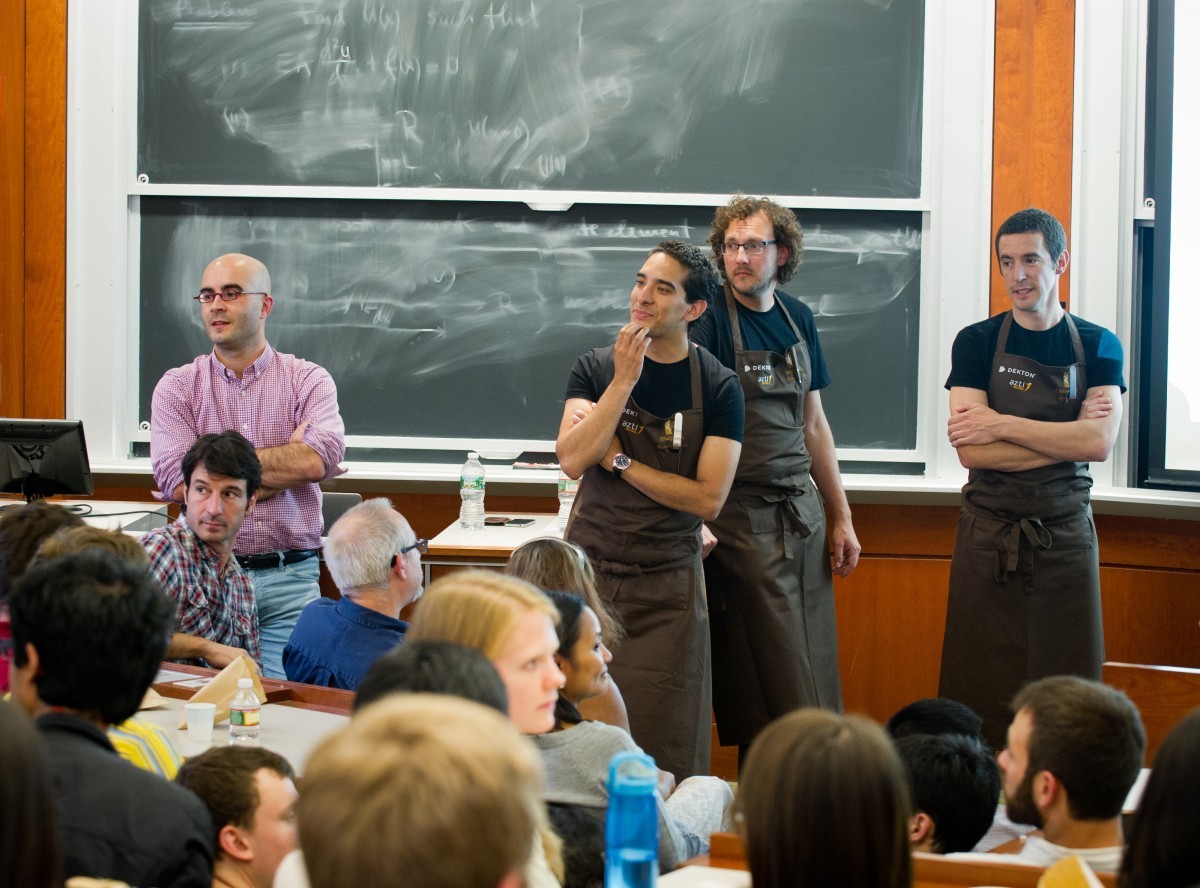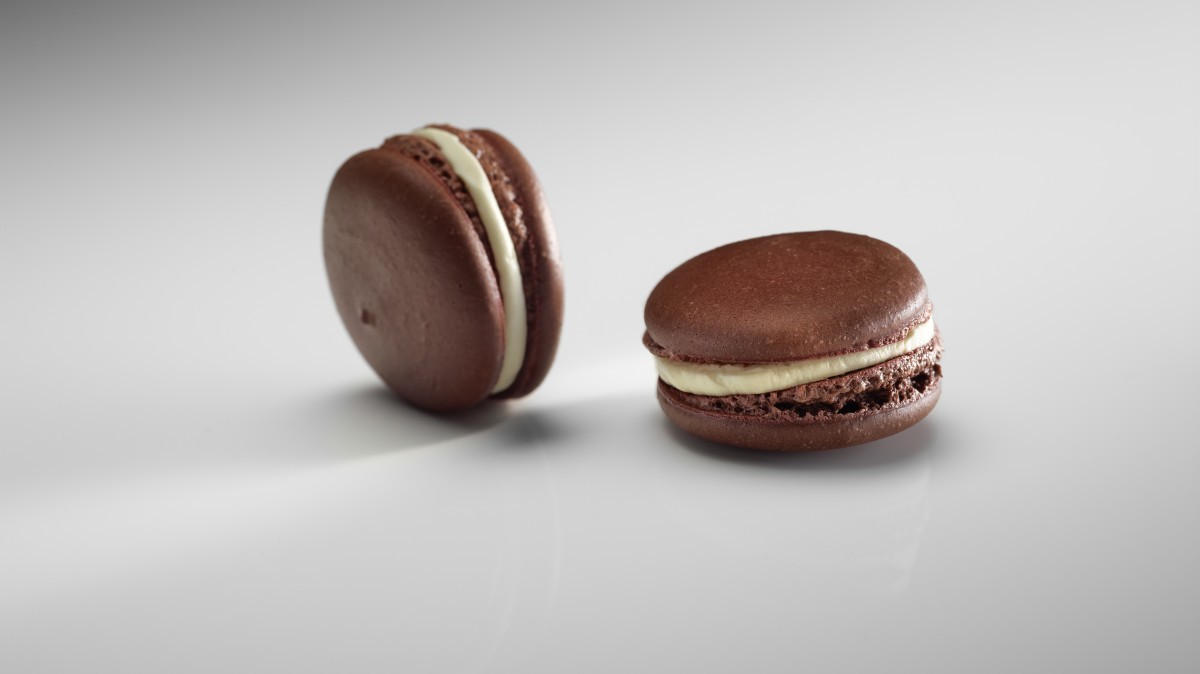“Food is connected to everything—language, texture, tradition,” claimed Chef Dani Lasa of Mugaritz to a packed audience at MIT. Now, the R&D chef can add engineering to that list thanks to Pedro Reis, Associate Professor of Civil and Environmental Engineering and Mechanical Engineering. Reis recently invited R&D chefs from Mugaritz, a two-Michelin-star restaurant in Errenteria, Gipuzkoa (Basque Country, Spain), to MIT to be guest speakers in the “Mechanics: Modelling, Experimentation, Computation” seminar series. Struck by Mugaritz’s level of creativity and approach to innovation, Reis recognized a strong resemblance to research at MIT, which made him think there was the potential for a fruitful collaboration.
With a dedicated Research and Development Team of six chefs focused on finding new techniques, ingredients and flavors, Mugaritz has the ability to “experiment, explore and play with materials and structures” in a way similar to that of Reis’s Elasticity, Geometry & Statististics Laboratory (EGS.Lab). The EGS.Lab works extensively with thin structures, such as strands of hair or eggshells, finding functionality and structural integrity in these seemingly fragile forms.

Mugartiz’s Experimental Approach to Food
Since opening in 1998, Mugaritz has gained an international reputation for its experimental approach to food, and it is currently ranked sixth among the “50 World’s Best Restaurants,” according to Restaurant Magazine. Mugaritz’s founder Chef Andoni Luis Aduriz has prioritized both culinary evolution and an interdisciplinary approach, crossing the established borders to create food that is often described as “Techno-emotional Spanish.” In their trial kitchen (one of three kitchens at Mugaritz), the team experiments with ingredients to alter the structure and texture of food in order to subvert the diners’ expectations in a provocative and playful way.

The Art and Science of Taste
Chefs Dani Lasa, Ramon Perisé and Oswaldo Oliva shared the art and science behind their culinary creations in their talk, “Mugaritz, a natural science of cooking: senses, structures, textures and emotions.” Through a series of demonstrations, the chefs showed how gastronomic experiences are not governed by taste alone, but are multisensory and engage memory and cultural preferences. One social experiment they conducted during their presentation involved a taste test of a “sweet carpaccio.” They informed the audience that the meat’s sweet flavor resulted from the animal’s diet of figs, acorns and dates. Although the audience member tasting it confirmed it was indeed sweet meat, the surprise ingredient in the “carpaccio” was in fact dehydrated watermelon, transformed through a process of freezing, thawing and smoking.
The chefs also offered the audience savory “macaroons,” made from blood pudding and pork; many tasted chocolate despite the lack of this ingredient in the recipe. This impressive reinterpretation of a “Parisian macaroon” underscored their point that our judgment is inextricably linked to prior knowledge of a food’s texture, color, shape and other physical attributes.

Opportunities for Novelty are on the Table
Mugaritz has a close relationship with scientists of various disciplines, including chemists, microbiologists and neuroscientists, but previously has not worked with engineers. One reason for their visit to MIT was to satisfy the “need to touch other worlds” to learn how to do certain innovative things in the kitchen. According to Ramon Perisé, many of the chefs’ practices converge with those of MIT’s engineers, including finding inspiration in the natural world.
Having previously focused primarily on the chemical aspects of food, the Mugaritz team is beginning to explore the structure of materials—something that is central to the expertise of the engineers at MIT. During their three days at the Institute, the chefs met with various faculty working on the mechanics of fluids, materials and structures and visits to nine laboratories. Although according to Oliva, “it may take months to assimilate and put into use in our menu” the many interesting things seen at MIT, Reis points out that “The nature of their visit was to start a dialogue. It’s premature to say what specifically will develop from our ongoing collaboration, but opportunities for novelty are on the table.”
Presented by: Mechanical Engineering, Civil and Environmental Engineering and the Center for Arts, Science and Technology (CAST) at MIT
